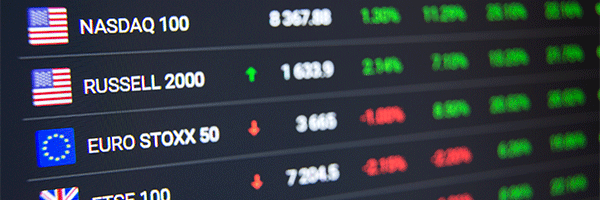
April 27, 2023 | Daily JAM, IWM, RWM, Short Term, Special Reports |
I’m expecting modestly positive economic news in the next few days. Which will, in my opinion, create a low-risk opportunity to make big gains by going short this market in order to profit as stock prices fall. I’m looking to put the first of those shorts in place right now. With the rest to go into place in the days after the Federal Reserve meets on Wednesday, May 3. In this Special Report, I’ll explain this perhaps initially counter-intuitive call on short-term market direction and give you the details on five of my favorite shorts for profiting in this market. With the first short pick today

April 18, 2023 | COST, Daily JAM, GDX, GLD, GOLD, KO, Mid Term, PEP, RWM, Special Reports |
10 Picks for the Coming Recession. This one is especially difficult. Not only do I face the usual crystal-ball problem that comes up whenever you try to pick an investment for the future–what’s the macro and micro world going to look like in 6 months or a year from now–but I’ve got two big Recession-specific challenges. First, is there actually going to be a Recession in 2023? All the signs, in my opinion, point toward a recession in the second and third quarters, but it’s by no means guaranteed that we’ll have the two quarters of negative GDP growth that’s required by the minimal definition of a recession. And what’s the point, you might well ask, of making picks for a coming recession that never arrives? And, second, how bad will this recession be?

September 16, 2021 | Daily JAM, Volatility |
Time–and more–to admit that this insurance policy I took out on March 24 against a big drop in stock prices isn’t going to pay off. I paid my premium and other than peace of mind–maybe–I got nothing in return.

September 14, 2021 | ALB, CMI, CRWD, Daily JAM, DE, PANW, Short Term |
I found myself humming “I scare myself” this morning as the market continued its September selling. The Dan Hicks and the Hot Licks song pretty much sums up the market action this morning. We all know that stocks go down in September so we’re sending stocks downward. And we all know that September 17 is the Big Bad Day in the month so it’s unreasonable to expect a turn in sentiment before that date. But so far, I’d note, the selling seems “orderly” with the usual candidates bucking the trend and showing up in the green. It’s when those still in the green stocks start tumbling that I’ll really start to worry.

September 13, 2021 | Daily JAM, Jubak Picks, Top 50 Stocks, Volatility |
Back on September 4 I posted a video on YouTube and this site “September and October 2021 Worse Than Usual for Investors?” that argued that September, the worst performing month for the Standard & Poor’s 500 from 1950 through 2020, and October, historically the home of the biggest one-day or one-week stock market crashes, stood a good change of being even worse than usual this year. I cited factors such as the Fed’s September 22 monetary policy meeting, a potential stalemate over the raising the debt ceiling, and economic uncertainty created by the Delta Variant (see last weeks weak jobs report as evidence on that front) as reasons for thinking that we could see a repeat of the historical weakness and volatility this September and October–but with a bit of supercharging. I don’t want to revisit all the reasons I gave in that video–Hey, just watch it, ya know?–but let me add a couple of points that I didn’t mention in the video. Like the effects of the continued shortage of chips on car manufacturers and hence car sales. Like the run-off in federal Pandemic economic help that’s now scheduled for this fall. Like signs of weakness in consumer sentiment and business confidence. Instead of more on “the problem” lets talk about potential solutions- the “what should I do stuff.”

August 17, 2021 | Daily JAM, Volatility |
One of the really tough things about trying to make money from options is that you need to get both the direction and the timing right. It finally looks like the market direction on the iShares Russell 2000 ETF (IWM) has turned in my direction. When I bought the September 17 Put Option on the IWM back on March 24, the ETF was trading at $212.04 and I was betting that the economic uncertainty that had battered the small cap stocks in the Russell 2000 would continue. Which would have made the Put Option I bought with a strike at $215 more valuable.

June 21, 2021 | Daily JAM, Dividend Income, FCX, Jubak Picks, NVDA, SCCO, Short Term, Special Reports, Top 50 Stocks, Volatility |
After Wednesday’s news from the Federal Reserve, we all know that an interest rate increase is coming–even if we don’t know when. Could be 2022. Could be 2023. And even if we don’t know how many increases we’re looking for in that time period. Could be one. Could be two. The need to revise your portfolio to take that change in monetary policy is obvious. But figuring out how and when isn’t by any means straightforward. What gives? And how should be navigate a period that is almost certainly going to end with a reversal of the lower for longer interest rates that have dominated asset prices for decades? Today, for the last installment in my Special Report: “5 Picks and 5 Hedges for a Falling Market” I’m going to take one last run at how to hedge this market and how to position your portfolio for the developing trends. (I don’t have much hope that this will be the last time I’m visiting this topic, of course.)

May 25, 2021 | AMAT, Daily JAM, MGM, Mid Term, Morning Briefing, NXPI, Special Reports |
2021 will be a very different year from 2020. Or to be more exact the second half of 2021 and 2022 will be very different. We’re looking at going from a financial market where investors and traders believed the Federal Reserve was on their side with cash and more cash to push the prices of financial assets higher and then higher some more to a market where everyone is asking when will the Fed take th punch bowl away and shut down the party.Let me be clear. At this point it’s not the certainty that the Fed will reduce its $120 billion in monthly bond buying in this exact month or that, or the certainty that the Fed will start raising interest rates before the end of 2022, say, but rather the worry that those events are on the calendar, that they will change the trend in the market, and that no one can predict when the turn will materialize.FDR said “We have nothing to fear but fear itself.” To which the market right now says “Exactly.” Look at this “fear and worry calendar” that I’ve put together. And today I’ve got 3 picks and one hedge for this market

May 19, 2021 | Daily JAM, Videos |
I’m starting up my videos on JubakAM.com again–this time using YouTube as a platform. The twenty-fourth YouTube video “Three Hedges for a Falling Market” went up today.

May 14, 2021 | Daily JAM, Volatility |
On May 11, when the Standard & Poor’s 500 was headed for a 2.14% loss on the day, I took a long hard look at selling the downside hedges I own in my Volatility Portfolio. In that portfolio I own a September 17 Put Option on the iShares Russell 2000 ETF (IWM) and two Call Options on the CBOE S&P 500 Volatility Index (VIX) for July 21 and August 18. I came very close to pulling the Sell trigger on one of the VIX calls. (Because the VIX goes up as fear in the market rises (usually on a sell off or worries about an impending sell off, the Call Option on the VIX acts as a Put Option. It will become more valuable as the market falls.) I was in the black on the August 18 Call Option with a strike price of 22 because the Vix had climbed 26.33% on the day to a close of 27.59. I think the decision not to sell was a non-decision. And a mistake. I dithered over it for so long that the market had closed by the time I decided to sell. A sell would have resulted in a profit of 9.2% from my March 23 buy. Not huge but still money. I decided not to sell the iShares Russell September 17 put with a strike price of $215. The ETF would close that day at $218.96 and then drop to a close of $211.75 on May 12. A Sell would have resulted in a gain of 15.6% atom my March 24 buy. Unlike the failure to sell the VIX Call, I don’t think the decision not to sell the IWM Put was a mistake even if it meant foregoing a 15% profit (on a holding period of less than 2 months.) Let me explain.

April 22, 2021 | Daily JAM, Videos |
I’m starting up my videos on JubakAM.com again–this time using YouTube as a platform. The twentieth YouTube video “6 picks for next week’s earnings flood” went up today.

March 31, 2021 | Daily JAM, Morning Briefing |
The one certainty in the stock market right now, I’d say, is volatility. Both to the upside and to the downside. So I think we should take what the market is giving us. Using these three moves in the short term.











